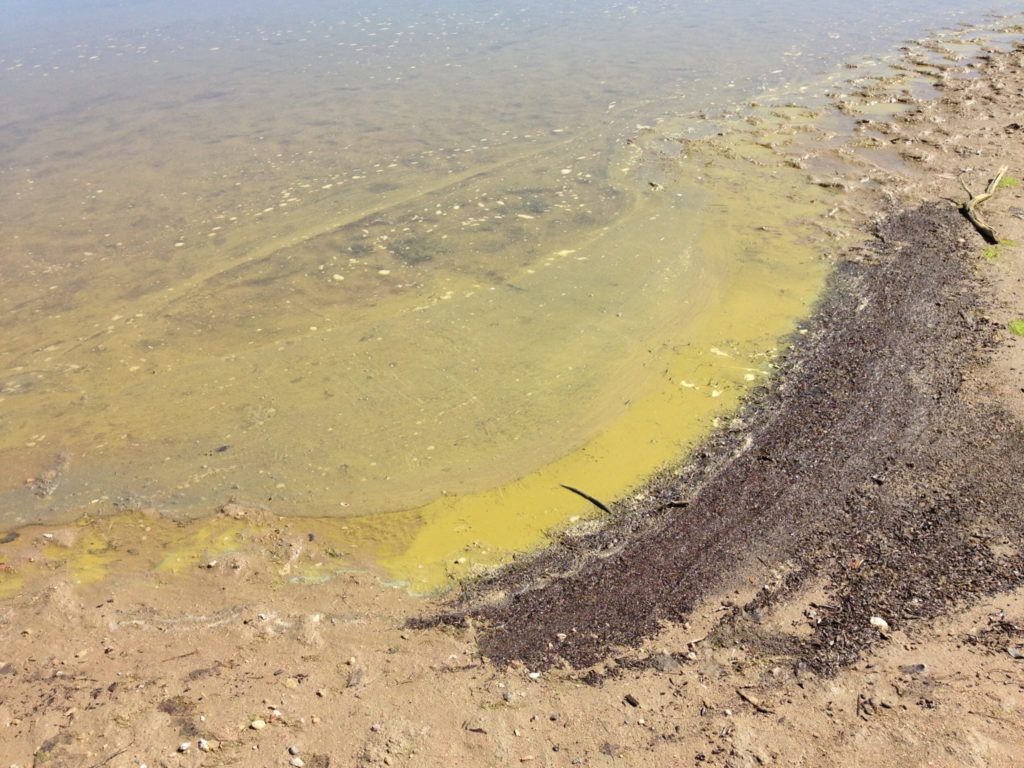
Colorado State University undergraduate students often learn technical skills in research and lab work. This summer, a team of engineering students took those skills to new heights against a major threat to our way of life.
Thanks to a year-long grant from the U.S. Environmental Protection Agency, the interdisciplinary team took part in the agency’s P3 Program Virtual Expo, a hands-on part of the EPA’s National Student Design Expo. The team proposed an innovative, autonomous platform to a significant threat to Colorado waterways – harmful algal blooms.
Despite all the waterways in Colorado, there are no monitoring programs for the poisonous blooms, said Project co-investigator and Chemical and Biological Engineering Professor Brad Reisfeld.
“This project could help provide a foundation for such a program,” said Reisfeld. “The eventual overall outcome is to help assure water resource sustainability and safeguard human, animal, and ecosystem health.”
Toxic threats and researching solutions

Harmful algal blooms release large amounts of toxins that contaminate water supplies nationwide. Without a monitoring program in place, blooms alter long-term water strategies and force emergency measures to protect community health.
Students are working with Reisfeld and the team to develop an autonomous, water-based drone that continuously detects toxic algae in lakes, rivers, and other inland water bodies. The drone navigates with machine learning, lidar, and sonar, and has on-board sensors to monitor water quality without human intervention.
After determining whether an algal bloom is normal or toxic, the drone transmits data in real-time to decision makers.
Challenges in sensing and autonomy
Engineering a drone that can detect harmful blooms, and do it without human intervention, is not without its challenges. Aside from independently navigating across an entire lake, the drone needs to test algae outside of a full laboratory.
“The ways to detect harmful algal blooms and separate them from generic algal blooms do exist,” said mechanical engineering student team member Katie Calsyn. “The sensing techniques are somewhat new and there are fewer options than the team would ideally have.”
The team addressed detecting toxicity by using sensitive chemical sensors. Instead of an air-based drone, a water-based drone was chosen since it maintains contact with water. That makes continuous testing easier.
Calsyn said that the drone would be taken by a technician to a body of water, then released to scan for problems and report back. It would be used particularly in summer months when algae grows readily in warmer water, and in areas where agricultural runoff causes frequent harmful blooms.
EPA student design grant funding
Funding for the project stems from a year-long $25,000 EPA P3 student design competition grant led by a group of interdisciplinary CSU researchers.
Along with Reisfeld, the project co-investigators include Professors Steve Simske in Systems Engineering, Ed Hall in the Department of Ecosystem Science and Sustainability, Warner College of Natural Resources, and Pinar Omur-Ozbek, Associate Professor, Department of Civil and Environmental Engineering.
Overall, students will work for at least two semesters on the project. It provides structure for students across majors to work together solving a challenging and highly relevant problem. Materials for the Expo were prepared entirely by students, including poster presentations, video recordings, and team photos.
Students learning across disciplines
Students offer their own ideas, based on classwork and experience, filling in gaps of knowledge in the group. Students learn to think from multiple perspectives, to include voices and ideas that might not normally be considered.
“Every idea would need to be run through the team and everyone would provide the pros and cons of it,” said chemical and biological engineering student team member Shubh Koradiya. “Working with my team has helped me leave my ‘academic comfort zone’ and look for knowledge outside of it.”
Reisfeld agreed that the project provides teamwork experience, differences in perspective, and other skills often learned outside the classroom.
“I expect that students will take with them not only the technical skills,” he said, “but also the ‘soft’ skills they acquire during the project as they begin their engineering careers.”
Student Team:
- Luke Aldana, Electrical Engineering
- Blake Billera, Mechanical Engineering
- Kate Boyd, Chemical and Biological Engineering
- Katie Calsyn, Mechanical Engineering
- Casey Johnston, Environmental Engineering
- Shubh Koradiya, Chemical and Biological Engineering
- Fritz Ogden, Chemical and Biological Engineering
- Emily Radtke, Chemical and Biological Engineering
- Adrien Schissler, Chemical and Biological Engineering
Project Co-investigators:
- Brad Reisfeld, Professor, Department of Chemical and Biological Engineering
- Pinar Omur-Ozbek, Associate Professor, Department of Civil and Environmental Engineering
- Steve Simske, Professor, Systems Engineering
- Ed Hall, Associate Professor, Department of Ecosystem Science and Sustainability